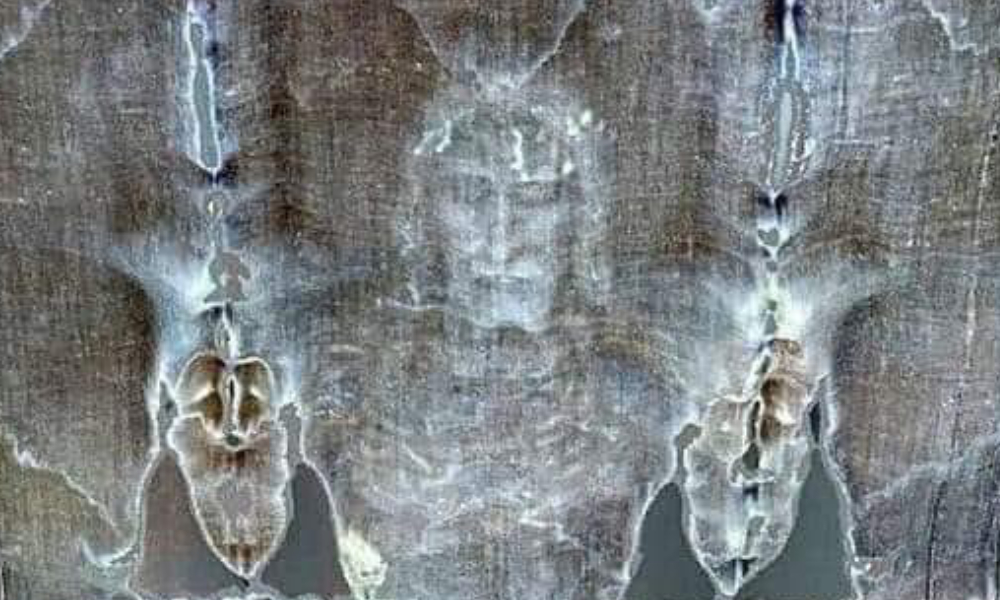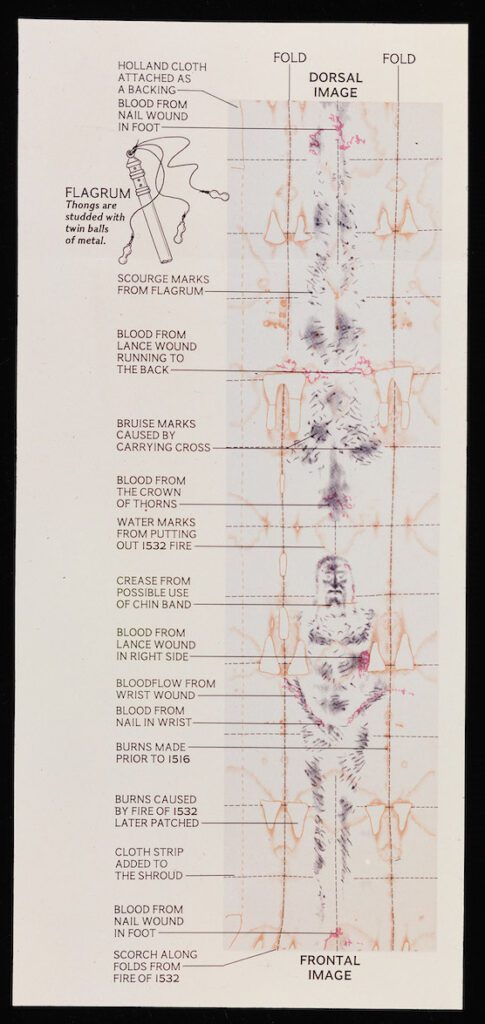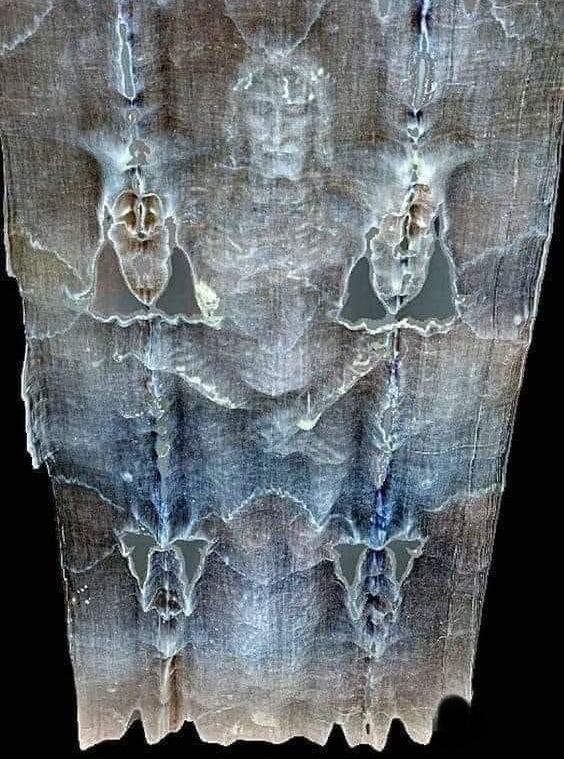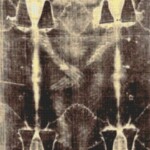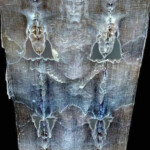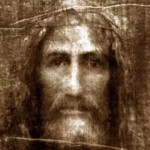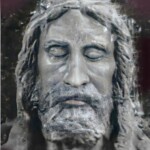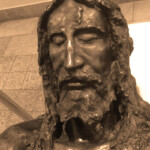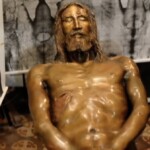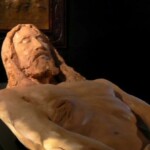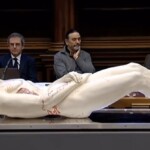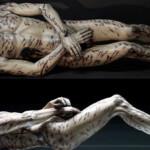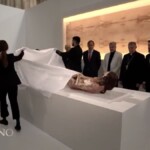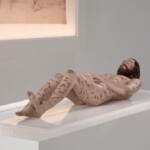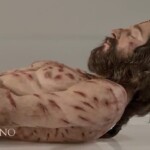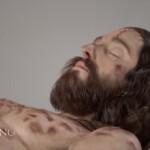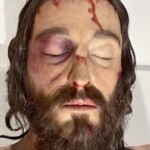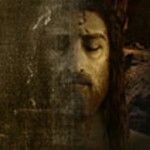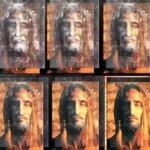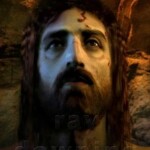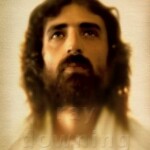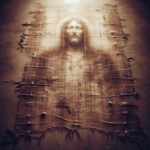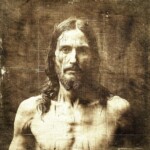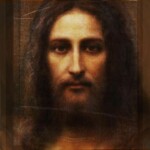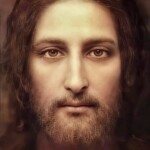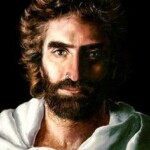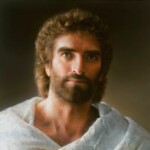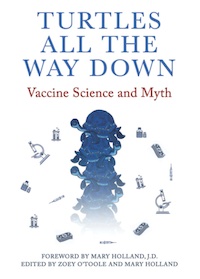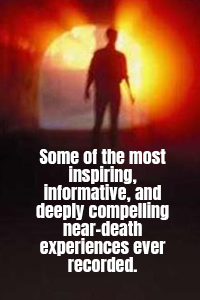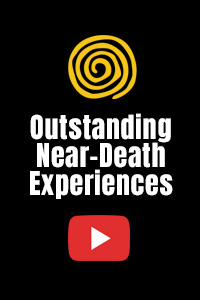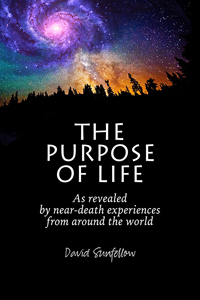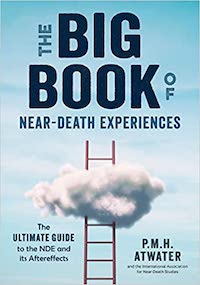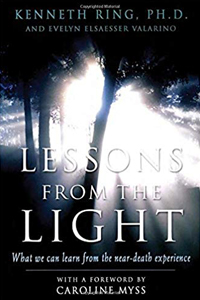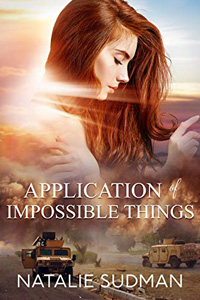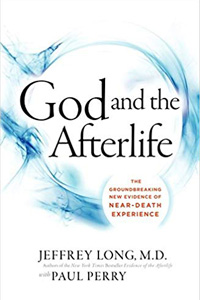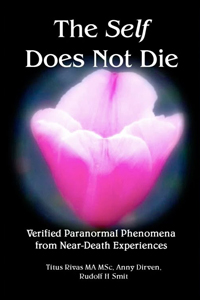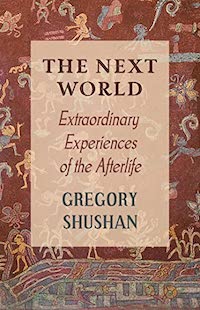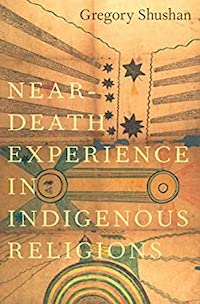All about the most amazing historical artifact in human history: The Shroud of Turin, which many believe to be the actual burial cloth of Jesus.
…………………
Russ Breault: The Shroud Of Turin In 14 Minutes
In 14 mesmerizing minutes, Russ Breault explains what makes The Shroud of Turin so extraordinary.
Mr. Breault has appeared in numerous nationally televised documentaries airing on CBS, History Channel, Discovery Channel and EWTN. He has appeared on Good Morning America, ABC World News Tonight and was an adviser to CNN’s “Finding Jesus” series. He hosted and produced 12 episodes of The Shroud Report, a half-hour interview show with the world’s leading experts.
He has participated in nearly every international research symposium since the first Shroud of Turin Research Project (STURP) conference in 1981. He attended all three recent public exhibitions in Turin, Italy in 1998, 2000 and 2010.
Mr. Breault is the President and founder of the Shroud of Turin Education Project Inc. with a simple eleven word mission statement: “To advance the knowledge of the Shroud to a new generation.”
…………………
Barrie Schwortz, Creator Of The Shroud Of Turin Website, Discusses The Shroud Of Turin
“I’m a Jew who can say that my faith in God was restored by my study of the Shroud of Turin. So the Shroud isn’t just for Christians; it’s for everyone!”
— Barrie Schwortz, creator of The Shroud of Turin website. Barrie was the official documenting photographer for the Shroud of Turin Research Project, Inc., (STURP), a team of American scientists and researchers that spent 120 continuous hours conducting an examination of the Shroud in 1978.
…………………
Dr. John Campbell Explores The Shroud Of Turin
…………………
The Mystery Man In The Holy Shroud
…………………
Shroud Of Turin Used To Create 3D Body Of Jesus
In early 2018, researchers in Rome unveiled a 3D carbon copy of what Jesus looked like, based on the measurements of The Shroud of Turin.
The statue is the three-dimensional representation, in actual size, of the man of The Shroud, created following the precise measurements taken from the cloth. Based off the model they are able to tell, he was nearly 5 ft. 11 inches tall, whereas the average height at the time was around 5 ft. 5 inches. Researchers believe that they finally have the precise image of what Jesus looked like, and based on the marks on The Shroud of Turin, Jesus received “a total of at least 600 blows.” The sculpture of his tortured body reflects these wounds.
“According to our studies, Jesus was a man of extraordinary beauty. Long-limbed, but very robust, he was nearly 5 ft. 11 in. tall, whereas the average height at the time was around 5 ft. 5 in. And he had a regal and majestic expression.”
This 3D “Carbon Copy” Of Jesus Was Created Using The Shroud Of Turin
…………………
Recent Shroud of Turin News Stories
• Scientists Make Shock Shroud Of Turin Discovery As New Evidence Suggests Burial Cloth ‘Showing Imprint Of Jesus’ Is REAL (The U.S. Sun, 08/20/24)
• Face of Jesus? AI Recreates Stunning Likeness Of Shroud Of Turin Image That Many Believe To Be Christ (Olivia Land, New York Post, 08/22/24)
• Shroud Of Turin Still Surrounded With Mystery And Passion (CNN, 04/13/20)
• The Hunt for the DNA of Jesus (DailyMail, 04/17/17)
• DNA Testing Deepens Mystery of Shroud of Turin (LiveScience, 10/23/15)
…………………
The Silent Witness
The Silent Witness is a monumental documentary based on scientific investigations of the Shroud of Turin burial cloth. In it, noted medical examiners, theologians, physicists and historians use modern science to trace the probably history of the cloth and reconstruct the events of Christ’s passion. The startling results of their detective work unfold dramatically. The 1978 release that won a British Academy Award and many other International prizes and helped put the Shroud of Turin high on both the religious and scientific agenda. Produced and Directed by David W Rolfe and written by Ian Wilson, Henry Lincoln and David W Rolfe. DoP, Barham Manocheri; Editor, Peter Hollywood.
…………………
The Shroud Of Turin: A Grave Injustice
A Grave Injustice recounts how the carbon dating test of the Shroud that purportedly shows it to be a medieval fake was seriously flawed, and that a more accurate test has yet to be made. This film uses scientific, historical, medical, and archaeological research on the Shroud to reveal all the evidence for the authenticity of it as the burial cloth of Christ.
Producer/Director David Rolfe writes:
“I have made a study of the subject through four documentaries made over a period of over forty years starting with The Silent Witness, winner of a British Academy Award and many other international prizes. In 2009 I was given exclusive permission to film the Shroud in HD for the first time. This footage was used in my own films and is also displayed within the Museum of the Shroud in Turin. If you think the C14 test carried out in 1988 was the last word on the subject view my film A Grave Injustice.”
…………………
Shroud Of Turin (A 2008 BBC Documentary)
Commissioned by the BBC in 2008, twenty years after the C14 test that cast a shadow over Shroud research, this film looks at how that test stands up against the weight of other evidence from history, archaeology, forensic medicine, art, and 3D analysis. It is the first film production to have direct access to film the Shroud in high definition.
In 1988, the Carbon 14 dating of the Shroud of Turin identified the most famous relic in Christendom as a fake. But since then, despite many attempts, no one has been able to determine who the forger was or how it might have been done. Rageh Omaar sets out to find out exactly what it is about the image that has defied imitation and explores new evidence that challenges the verdict on the Shroud. With unique access to the Shroud itself and those closest to it, Rageh goes on his own journey of discovery. He also visits the leader of the 1978 US investigation that was given access to the cloth for a week, Dr John Jackson, who reveals the results from the data collected and a lifetime of research.
Two other Shrouds of Christ have existed at different times down the centuries. One is the Shroud of Constantinople, described as having an image of Christ and stolen by the Crusaders in 1204. The Turin Shroud appeared 150 years later in the family of one of those Crusaders. The other is the Shroud of Jerusalem that wrapped Jesus’ body. With the help of a team of international scholars Rageh explores new evidence that links the Turin Shroud to both locations and times. Could they be one and the same? But if they are, where does that leave the Carbon 14 test? New information about the behavior of C14 in the atmosphere exists which was unknown 20 years ago when the Shroud was dated. A new hypothesis has come forward that could explain how genuinely old linen could produce a much younger date in certain conditions.
…………………
8 Reasons Why The Shroud Of Turin Might Be The Burial Cloth Of Jesus
By Brian Chilton
April 25, 2017
The Shroud of Turin is perhaps one of the most controversial artifacts of all-time. Either it is one of the most incredible, holy relics related to Jesus of Nazareth or it is one of the most ingenious hoaxes ever invented. The Shroud of Turin is a 14′ 5″ x 3′ 7″ linen cloth that holds the image of a crucified man that matches the description of the manner in which Jesus of Nazareth was crucified.
The front and the back of the crucified man is shown, the front on one end of the cloth and the back on the other end with the head meeting towards the middle. The hands of the man are crossed while the knees are slightly bent. Blood covers the Shroud especially at the nail marks on the hands and feet.
The Shroud is quite controversial, especially since 1988. A team of researchers took three samples from the Shroud and dated them using radiocarbon at three independent laboratories. The test deemed that the Shroud dated to around 1260-1390 A.D. thus seemingly proving that the Shroud was a medieval hoax.
Yet, the Shroud was not put to rest. Further tests seem to elevate the probability of the Shroud’s authenticity. As one investigates the Shroud, it must be understood that the resurrection of Jesus does not rest upon the Shroud’s authenticity. However, if the Shroud is authentic, it adds further weight to the Christian’s claim.
There is no way to conclusively prove or disprove the Shroud. Yet, data will lead one to accept or reject the Shroud’s authenticity. From my research, I have discovered 8 reasons why the Shroud is probably the authentic burial cloth of Jesus.
…
1. The 1988 carbon-dating test was flawed
Many researchers will dispute the claim, however, a growing consensus of researchers are accepting the notion that the 1988 carbon-dating test was flawed (Stephen Adams, Telegraph, 2009).
It is well documented that the Shroud was damaged by a fire in the 1200s and was extinguished and repaired by a group of nuns at the cathedral where the Shroud was held.
A person can still see the marks on the Shroud where it was damaged. It is now widely accepted that the fibers tested in 1988 came from the nuns’ repair work. Recent studies confirmed that this was the case as dye was found on the fibers that were tested, indicating that the fibers did not originate with the original cloth (Adams, Telegraph, 2009).
In 2013, a new set of tests were conducted on the Shroud that placed the cloth to the time ranging from 300 B.C. to 400 A.D., well within the time of Jesus of Nazareth (Stanglin, USA Today, 2013). Thus, the 1988 testing is no longer the knockout punch that it was once held to be.
…
2. The blood on the Shroud is authentic
Skeptics have long thought that the image and blood on the Shroud were painted on the cloth. However, it has been confirmed that the blood and image have separate origins. When examining the cloth, researches have noted that the blood appeared before the image. The Turin Shroud researchers have adopted the slogan “blood first, then image” to describe the Shroud. The blood has been confirmed as authentic hemoglobin and identified as Type AB.
…
3. The image on the Shroud is not a painting
As archeologist Ted Wright noted recently on The Bellator Christi Podcast, when researching the Shroud, we can rule out several things that the Shroud is not. One of those things that has been negated is the idea that the Shroud is a painting. The image on the Shroud is only a few fibers deep.
Also, the image is a photographic negative and is three-dimensional. Whatever the image is, it certainly did not come from a painter’s brush.
…
4. The pollen on the Shroud is found exclusively in the Jerusalem area
Pollen has been found throughout the Turin Shroud. Dr. Max Frei noticed that around the head and the abdomen, the imprints of flowers are visible although they are quite difficult to observe.
The pollen and the imprints match flowers found in the vicinity of Jerusalem including the pistacia lentiscua, the chrysanthemum coronarium, and the gundelia tourneforii (Whanger and Whanger, Duke.edu, 2015). The Council for Study of the Turin Shroud from Duke University notes the following:
“While there are images of hundreds of flowers on the Shroud, many are vague or incomplete. We feel we have identified, tentatively but with reasonable certainty, twenty-eight plants whose images are sufficiently clear and complete to make a good comparison with drawings in the botany literature.
“Of these twenty-eight plants, twenty-three are flowers, three are small bushes, and two are thorns. All twenty-eight grow in Israel. Twenty grow in Jerusalem itself, and the other eight grow potentially within the close vicinity of Jerusalem, either in the Judean Desert or in the Dead Sea area or in both. All twenty-eight would have been available in Jerusalem markets in a fresh state” (Whanger and Whanger, Duke.edu, 2015).
These findings suggest that the Turin Shroud must have originated in, or at least have been in the vicinity of, Jerusalem. That the pollen dates to the first-century also provides an indication that the Shroud was first found in first-century Israel.
…
5. The wounds of the man on the Shroud match the details of Jesus’s crucifixion
Any examination of religious art depicting the crucifixion of Jesus shows the nail prints in the palms of the hand. However, the Turin Shroud shows the nail marks at the lower part of the hand into the wrist. Experiments conducted on cadavers note that the Turin Shroud accurately depicts how crucifixions would have transpired.
In addition, the whip markings on the man’s back match the ends of the flagrums used by the first-century Romans for scourgings.
…
6. The points of the face match those of the earliest portraits of Jesus
The Council for Study of the Turin Shroud also made another important evaluation of the Shroud. They noted that early depictions of Jesus match certain details of the facial image found on the Shroud. The Christ Pantocrator of St. Catharine’s Monastery at Sinai is one of the oldest Byzantine religious icons which dates to the 6th century (i.e., 500-599 A.D.).
For more information on the Christ Pantocrator painting, see https://en.wikipedia.org/wiki/Christ_Pantocrator_(Sinai)
…
7. The identical position and type of blood on the face of the Shroud with that of the Sudarium of Oviedo
Another artifact of great interest is a cloth called the Sudarium of Oviedo. The Sudarium is a covering that is said to have been placed over the face of Jesus when he was lowered from the cross. The cloth may have remained there for his burial. The Gospel of John notes the possibility of both cloths.
John notes that “The wrapping that had been on his head was not lying with the linen cloths but was folded up in a separate place by itself” (John 20:7). While the Sudarium does not contain a facial image, it does have a large amount of blood around the nose and forehead.
The Sudarium is mentioned around 570 A.D. by one Antoninus of Piacenza. The blood markings on the Sudarium match the blood markings on the Shroud and also contain the same Type AB hemoglobin as found on the Turin Shroud.
…
8. The probability of high-powered ultraviolet radiation used to make the image on the Shroud.
One of the more bizarre features of the Shroud is the X-ray that is found of the man’s teeth and fingers. Upon closer examination, one will notice squares around the mouth. These squares have been discovered to be an X-ray of the man’s teeth. The fingers appear elongated because a person is viewing the man’s phalanges.
Nothing existed in medieval or ancient times that could produce such an X-ray as this. It has been theorized that when Jesus resurrected from the dead, a large burst of radiation emitted which would have created the image on the cloth. Studies have indicated that “the power of VUV radiations required to instantly color the surface of linen that corresponds to a human of average height, body surface area equal to = 2000 MW/cm2 17000 cm2 4 thousand billion watts makes it impractical today to reproduce the entire Shroud image using a single laser excimer, since this power cannot be produced by any VUV light source built to date (the most powerful available on the marked come to several billion watts)” (uCatholic.com, 2016).
To make matters more interesting, the research team at the Church of the Holy Sepulchre noted that “measuring devices either malfunctioned or ceased to work at all…previously performed analyses with the instruments seemed to have been distorted by an electromagnetic disturbance” (uCatholic.com, 2016).
This does not prove that the Shroud originated at the Church of the Holy Sepulchre and it does not prove that high-powered radiation created the image on the Shroud, but the connection of the two is quite compelling.
…
Conclusion
As archaeologist and Christian apologist, Ted Wright, once said, “we can’t be completely dogmatic about the Shroud of Turin. But there is certainly a high degree of probability that it is genuine.” I think Wright is correct.
It must be said that the Christian does not need the Shroud of Turin to provide evidence for the resurrection of Jesus. A compelling case for the resurrection of Jesus of Nazareth can be made without the Shroud. However, if the Shroud of Turin is authentic, then the believer can catch a glimpse of the Galilean who brought about salvation to the world. If not, the Christian has nothing to lose.
It is truly a win-win situation. The documentary evidence from both Christian and non-Christian sources alone are enough to verify the reliability of the crucifixion and resurrection account. But, it would not be surprising if the same Jesus who appeared to skeptical Thomas is the same Jesus who left a relic that would demonstrate to billions and billions more that he had indeed risen.
Can we ever be certain that the Turin Shroud holds the image of Jesus of Nazareth? Probably not. However, the evidence seems highly probable that the Turin Shroud is genuinely the cloth that covered Jesus of Nazareth before his amazing resurrection from the dead. If so, the image of Jesus could have been left behind, but the real Jesus is no longer there. He is alive! Jesus is now at the “right hand of God and intercedes for us” (Romans 8:34).
“True, we do not have absolute proof for the identity of the man of the shroud. Neither do we need it to demonstrate the reality of the death and resurrection of Jesus (or for anything else in the Christian faith). But it appears to provide strong empirical corroboration for Jesus’ resurrection, and when combined with the historical evidence for this event I would submit that we have a twofold apologetic from both science and history.” – Dr. Gary Habermas, New Testament historian
…
Sources:
Adams, Myra. “The Shroud of Turin, Authenticated Again.” NationalReview.com (April 16, 2016). Retrieved April 17, 2017. http://www.nationalreview.com/article/434153/shroud-turin-jesus-christ-blood-relic-sudarium-oviedo
Adams, Myra. “Easter and the Shroud of Turin, ‘Nothing is Impossible with God.” NationalReview.com (April 15, 2017). Retrieved April 17, 2017. http://www.nationalreview.com/article/446763/easter-shroud-turin-jesus-christ-carbon-14-dating-medieval-forgery-debunked-crucifixion-resurrection
Adams, Stephen. “Turin Shroud Could be Genuine as Carbon-Dating was Flawed.” Telegraph (April 10, 2009). Retrieved April 17, 2017. http://www.telegraph.co.uk/news/religion/5137163/Turin-Shroud-could-be-genuine-as-carbon-dating-was-flawed.html
Whangler, Alan, and Mary Whanger. “Council for Study of the Turin Shroud.” Duke.edu (2015). Retrieved April 17, 2017. http://people.duke.edu/~adw2/shroud/flowers-and-pollens.html
“Scientists Who Opened Christ’s Tomb Detect Mysterious Readings that Support Shroud Theory.” UCatholic.com (December 5, 2016). Retrieved April 18, 2017. http://www.nationalreview.com/article/434153/shroud-turin-jesus-christ-blood-relic-sudarium-oviedo
Stanglin, Doug. “New Test Dates Shroud of Turin to Era of Christ.” USA Today (March 30, 2013). Retrieved April 17, 2017. https://www.usatoday.com/story/news/world/2013/03/30/shroud-turin-display/2038295/
Wright, Ted. “The Resurrection of Jesus: Exploring the Archaeology—Part 1.” EpicArchaeology.org (April 2017). Retrieved April 17, 2017. http://epicarchaeology.org/archaeology-and-the-new-testament/the-resurrection-of-jesus-exploring-the-archaeology-part-1/
Unless otherwise noted, all quoted Scripture comes from the Christian Standard Bible. Nashville: Holman, 2017.
………………
What Does The Shroud Of Turin Prove About Easter?
By Myra Adams
National Review
April 4, 2015
Beginning this evening, Christians around the globe will begin their annual celebration of Easter, or Resurrection Sunday, commemorating what they consider to be the greatest event in human history. The basis for the world’s largest religion is the belief that, in Jerusalem around a.d. 33, an itinerant Jewish rabbi died as a result of crucifixion and after three days rose from the dead, fulfilling his own and numerous other ancient Messianic prophecies found in the Hebrew Bible, or Old Testament.
Sounding too much like science fiction, this tale is easily dismissed by non-believers. However, millions of Christians firmly believe that material scientific proof of the Christ’s resurrection actually exists today, and that evidence is called the Shroud of Turin.
The Shroud, alleged to be the burial cloth of Jesus, is the most studied, tested, and analyzed religious relic the world has ever known. It is preserved in an underground vault in the Cathedral of Saint John the Baptist in Turin, Italy. Beginning April 19, the Shroud will be on a rare public display, through June 24. Pope Francis is scheduled to pray in front of the Shroud on June 21, and his visit to Turin will generate enormous global media attention.
The Shroud’s public exposition, highlighted by the pope’s visit, naturally will also generate a debate about the Shroud’s authenticity. If you have read this far, but are laughing at the idea that the Shroud of Turin is the burial cloth of Jesus and proof of his resurrection, you should know certain numerous indisputable scientific facts. In fact, they are far too many for this space, but here are some highlights.
The key mystery of the Shroud centers on how and why there is a detailed negative photographic image of a beaten, crucified man, anatomically correct, front and back, head to toe, on a piece of fine linen cloth measuring 14.5 feet by 3.5 feet.
Scientists have determined that the weave of the flax linen cloth dates back to Jerusalem at the time of Jesus. Furthermore, pollen and dust found on the Shroud are native to where, according to the Bible, Jesus lived and walked.
Human male blood found on the Shroud is a rare type AB. As one would expect, blood of that crucified male penetrates the linen cloth. But here is where science enhances the Shroud’s mystery: Blood on the cloth preceded the image of the crucified man. “Blood first, image second” is a mantra of Shroud researchers.
Here is a startling fact that makes the Shroud nearly impossible to be considered a forgery and enhances the mystery. Unlike his blood, the man’s crucified image does not penetrate the cloth but rests on top. His image could be scraped away with a razor blade. Since any earthly substance used to create the man’s image would seep into and adhere to the cloth, this lack of penetration continues to baffle modern science.
Moreover, tests on the mysterious substance constituting the image have concluded that it was applied with 100 percent consistency, as it rests on the cloth’s top two microfibers. Such consistency is a feat impossible to achieve with human hands.
Then there is the latest technology that enabled the discovery that the Shroud contains “distance information,” derived from techniques first developed by NASA. Distance information means that the image can be read like a 3D map. The application of this technology to the Shroud was the basis for the History Channel’s 2010 mega-hit documentary The Real Face of Jesus? (The show will be aired again today.)
Reading the Shroud like a 3D map enabled the artists and scientists who studied it to develop what they determined was the beaten and bruised human face of Jesus. Surprise! He looks like a Middle Eastern man in his thirties.
Now comes the part where the Gospels of Matthew, Mark, Luke, and John, with their accounts of Christ’s suffering and crucifixion, are reflected by the specific marks of torture seen on the man in the Shroud. In plain view are over 100 whip marks on every portion of his body, left by scourging from Roman flagra. Blood stains that formed a circle around the top of his head are consistent with the crown of thorns.
Local Jerusalem road dust has been discovered on the cloth over his knees, severely bruised after several falls. Most notable are the holes left by large spikes, the marks of crucifixion, displayed on his wrists and feet. Blood stains can be seen near a large wound that would have been consistent with injury from a spear in his side. Also remarkable and biblically compatible is that the man in the Shroud did not have any broken bones.
Can you think of one person in all of human history whose well-known suffering corresponds to the exact marks seen on the man in the Shroud? As mentioned earlier, one of the most important Shroud questions concerns how the image of a tormented, crucified man was formed on his burial cloth.
A scientific answer can be found in a 2012 study by world-renowned Shroud researcher Giulio Fanti of Padua University in Italy. His study strongly suggested that the force causing the man’s image to be imprinted on the cloth was radiation released in the form of an electrical discharge: in layman’s terms, a burst of light and energy.
This means that the Shroud may be proof not only of Christ’s Passion and crucifixion but also of his resurrection.
Fanti is also one of many scientists who have debunked the faulty carbon-14 testing conducted in 1988. The results of that testing, according to which the Shroud was created during the period between 1260 and 1390, reflected tests only to tiny pieces of border additions known to have been used to repair the cloth after it was damaged by a fire in the 16th century. Fanti’s dating study resulted in headlines — for example, “Shroud of Turin is not a medieval forgery” — that appeared across media (including National Review) around Good Friday, March 29, 2013.
Fanti examined the decay rate of microscopic fibers within the Shroud compared with decay rates of similar linen cloths known to be both older and newer. He concluded, with a 95 percent confidence level, that the Shroud’s creation ranged from 280 b.c. to a.d. 220. That timeframe obviously includes a.d. 33, the year traditionally associated with Christ’s crucifixion.
Decades of interest in the Shroud of Turin have led me to cultivate friendships with some of the world’s leading experts, including Russ Breault, president of Shroud of Turin Education Project Inc. He was a consultant to and appears in the History Channel’s The Real Face of Jesus? “We can never prove the Shroud to be authentic, because we don’t have the DNA of Jesus to make a match,” Breeault tells National Review. “However, we can certainly rule out forgery, for it is clearly not the work of an artist.”
An expert on the historic relationship between Adolf Hitler and the Shroud of Turin, Breault lectures on the subject. Hitler thought that the Shroud of Turin was the burial cloth of Jesus and wanted to possess it, believing that it would give him supernatural powers with which he could win the Second World War. Fortunately, Italian leaders and the Vatican successfully hid the Shroud from Hitler’s grasp, though his men came within inches of its secret hiding place.
Another Shroud expert who is an acquaintance of mine is Barrie Schwortz, who launched the first Shroud website back in 1996. Shroud.com has since evolved into the most comprehensive site for Shroud news and research. Barrie was the technical photographer for the famous Shroud of Turin Research Project in 1978, the first time in history that the Vatican allowed the Shroud to be examined by a team of renowned scientists and doctors for 120 consecutive hours.
In Turin, starting in mid-April when the Shroud goes on public display, Schwortz will meet with tour groups. It is expected that millions of pilgrims and tourists (this writer included), along with Pope Francis, will view the Shroud, which has not been on public display since 2010.
Given that ISIS has publicly warned the nation of Italy that it is a terrorism target, Schwortz is concerned for the Shroud’s security, telling National Review that “the authorities there are very hesitant to discuss their security arrangements with anyone, but you can be sure that extra measures are being taken in light of the recent threats from ISIS.” One can only hope that, as Italian authorities were able (with the help of divine intervention, some say) to thwart Hitler from finding the Shroud in 1943, their present-day successors will be able to keep it far from the reach of ISIS.
“The Shroud is actually an itemized receipt documenting the extraordinary price that was paid when God sent his only Son to redeem the world,” Russ Breault tells National Review. His statement is based in faith as much as in science, but to that I say, Happy Easter!
…………………
Shroud of Turin & Jesus Websites
• The Shroud of Turin – Evidence It Is Authentic (download pdf version)
• Shroud of Turin Website
• Subscribe to Shroud of Turin Website Mailing List
• Shroud of Turin Blog
• Shroud Encounter
• Shroud Photos
• The Shroud of Turin on Pinterest
• Jesus, Near-Death Experiences, and Religion
• Encounters with Jesus Website
• Encounters with Jesus on Rumble
…………………
…………………
…………………
…………………
AI Animates Image Based On The Shroud Of Turin
…………………
Prince Of Peace & Shroud Of Turin (Akiane Kramarik)
…………………
NHNE NDE Jesus Slideshow
Jesus, Near-Death Experiences, and Religion
…………………

